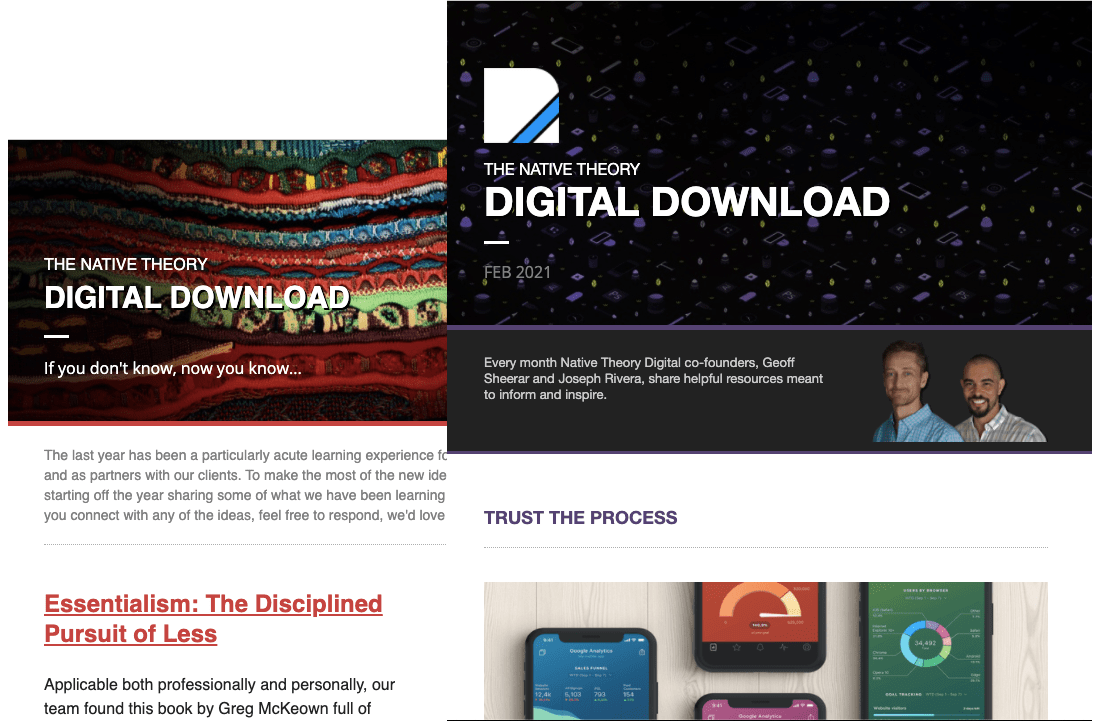In today’s rapidly evolving digital age, businesses are constantly on the lookout for effective strategies to reach and engage their target audience. One such strategy that has proven to be highly successful is inbound marketing, a comprehensive approach that encompasses a range of techniques and tactics.
Inbound marketing is all about attracting, engaging, and delighting customers through valuable content and experiences. By creating and sharing compelling content, businesses can capture the attention of your target audience and establish yourself as trusted authorities in their respective industries. This enables you to forge meaningful connections with your customers, building trust and loyalty over time.
Moreover, inbound marketing is not just about attracting customers, but also about nurturing and retaining them. By delivering personalized and relevant content to customers at each stage of your buyer’s journey, you can effectively guide them through the sales funnel and convert them into loyal advocates.
In this step-by-step guide, we will explore the key components of a successful inbound marketing campaign. Whether you’re new to inbound marketing or looking for ways to improve your current strategy, this guide will provide you with the knowledge and tools needed to get started.
Step 1: Define Your Target Audience
Before diving into any marketing strategy, it’s crucial to have a clear understanding of your target audience. Start by creating buyer personas or fictional representations of your ideal customers.
Your personas should include the following:
- Description: This section should paint a clear picture of who your persona is. Include demographics like age, gender, occupation, education level, and lifestyle. This helps in visualizing the person you’re aiming to reach with your content.
- Goals: Define what your persona is striving to achieve, both professionally and personally. This could include career advancement, personal development, financial stability, or improved work-life balance. Understanding their goals helps tailor your marketing efforts to show how your product or service can help them succeed.
- Pain Points: Identify the specific problems, challenges, or frustrations your persona faces. This could range from specific industry challenges to more personal or logistical issues they encounter regularly.
- Hesitations: Outline potential objections or concerns that your persona might have about your product or service. This could include price sensitivity, doubts about the effectiveness, or concerns about the ease of use. Understanding their hesitations allows you to address these concerns directly in your marketing materials.
By understanding your audience on a deeper level, you can tailor your content and messaging to resonate with their needs.
Step 2: Set Clear Goals and Objectives
To navigate the complexities of inbound marketing, having sharply defined goals and objectives is not just beneficial, it’s a necessity. Utilizing the SMART framework ensures that your goals are Specific, Measurable, Achievable, Relevant, and Time-bound. For example, instead of having a vague goal like “enhance online presence,” a SMART goal would state a specific objective, like “getting 1,000 new subscribers to our newsletter within a quarter.”
Beyond SMART goals, it’s important to incorporate Key Performance Indicators (KPIs) and Objectives and Key Results (OKRs) into your strategy. KPIs are quantitative metrics that provide insights into the performance of various aspects of your marketing efforts and indicate progress towards your goals. On the other hand, OKRs are a framework of setting and communicating goals and results that measure progress, create alignment, and encourage engagement around measurable goals.
Examples of KPIs:
- Website Traffic: Measuring the total number of visits to your website. This KPI helps in understanding the effectiveness of your content and SEO strategies.
- Lead Conversion Rate: The percentage of visitors who turn into leads by taking a desired action, like filling out a form. This indicates the effectiveness of your landing pages and calls-to-action.
- Social Media Engagement: Metrics such as likes, shares, comments, and followers on your social media platforms. This reflects how well your content resonates with your audience.
- Email Open and Click-Through Rates: Measuring how many people open your emails and click on links within them. These KPIs are vital for evaluating email marketing campaign effectiveness.
Examples of OKRs:
- Objective: Increase brand awareness in the target market.
- KR1 (Key Result 1): Achieve a 30% increase in social media mentions.
- KR 2 (Key result 2): Grow website traffic from the target demographic by 25%.
- Objective: Improve lead quality and conversion.
- KR 1: Increase the lead-to-customer conversion rate by 15%.
- KR 2: Decrease the lead acquisition cost by 20%.
- Objective: Boost content marketing effectiveness.
- KR 1: Attain a 20% increase in blog traffic.
- KR 2: Achieve a 10% higher engagement rate on content pieces.
Step 3: Audit Your Existing Content
Before creating new content from scratch, take an inventory of your existing content assets. This includes your website, blogs, whitepapers, and social media presence. Perform a thorough audit to assess the quality, relevance, and effectiveness of each piece.
During the audit process, conduct a gap analysis to identify missing topics or content formats that could better engage your buyer personas. This will help you prioritize content creation efforts and ensure that you’re providing valuable information at every stage of the buyer’s journey.
Step 4: Develop a Content Strategy
A robust content strategy is the cornerstone of successful inbound marketing. It’s not just about creating content; it’s about creating the right content that resonates with your audience and addresses their needs.
- Establish Content Pillars: Begin by identifying your content pillars. These are broad themes or topics that are central to your business and appeal to your target audience. They should reflect your expertise, address common customer questions, and align with your brand’s values. For instance, a fitness brand might have content pillars like nutrition, workout routines, wellness, and fitness gear.
- Develop a Content Calendar: A content calendar is essential for organizing and scheduling your content. It helps ensure a consistent and timely delivery of content across all channels. The calendar should detail what content will be published, when, and on what platforms. It also allows you to plan around important dates and events relevant to your industry.
- Leverage Different Content Formats: Diversify your strategy by incorporating various content formats like blogs, videos, podcasts, and social media posts. This approach caters to different preferences in your audience, increasing the reach and impact of your content.
By incorporating these elements into your content strategy, you can ensure that your inbound marketing efforts are structured, targeted, and effective. This approach not only attracts customers but also fosters lasting relationships with them, establishing your business as a reliable and authoritative voice in your industry.
Step 5: Optimize for Search Engines
Search Engine Optimization (SEO) is crucial to maximize the visibility of your content in search engine results pages (SERPs).
Here’s how to effectively optimize your content for search engines.
- Conduct Comprehensive Keyword Research: Begin by conducting thorough keyword research. Use tools like Google Keyword Planner, SEMrush, or Ahrefs to identify terms and phrases that your target audience commonly searches for. Look for a mix of high-volume keywords and long-tail keywords that offer lower competition but are more specific to your audience’s search intent.
- Place Keywords Strategically: Once you’ve identified your keywords, incorporate them strategically throughout your content. This includes placing them in titles, headings, subheadings, the body of the content, meta descriptions, and alt-text for images. However, avoid keyword stuffing; your primary focus should be on creating natural, reader-friendly content.
- Optimize Meta-Tags and Descriptions: Craft compelling meta-titles and meta-descriptions for each page and post. These should include your primary keywords and provide a clear, concise summary of the content. Well-written meta descriptions can improve click-through rates from SERPs.
- Optimize URL Structure: Ensure that your URLs are clean, readable, and include relevant keywords. A well-structured URL not only helps search engines understand your content but also improves user experience.
- Optimize Images: Use descriptive, keyword-rich file names for your images. Additionally, fill in the alt-text with a brief description that includes your target keywords. This improves the accessibility of your site and helps search engines index your images properly.
BONUS TIP: SEO isn’t just about appeasing search engines – it’s also about enhancing the user experience. Ensure that your content is informative, engaging, and easy to navigate.
Step 6: Use Social Media Strategically
Social media platforms play a significant role in inbound marketing. Identify the platforms where your target audience is most active and engage with followers to foster a sense of community. Share valuable content, participate in relevant conversations, and respond promptly to comments or messages.
Additionally, consider paid advertising options on social media platforms to expand your reach and target specific demographics. Social media advertising allows you to reach a larger audience while maintaining precise targeting based on demographics, interests, and behaviors.
Step 7: Implement Lead Generation Tactics
Lead generation is a crucial aspect of inbound marketing. Encourage website visitors to become leads by offering valuable content in exchange for their contact information. These offerings are often referred to as lead magnets and can include eBooks, whitepapers, templates, or exclusive access to webinars or events.
Design compelling landing pages that highlight the value of the offer and use persuasive copywriting techniques and clear calls to action (CTAs) to encourage conversions. Ensure that your forms are user-friendly and capture relevant information without being too intrusive.
Step 8: Nurture Leads Through Email Marketing
Once you have captured leads’ contact information, it’s important to nurture them through email marketing campaigns. Segment your email list based on different criteria such as buyer personas, interests, or engagement levels. This allows you to tailor your messages accordingly and provide personalized content that addresses each recipient’s needs.
Automate your email campaigns using marketing automation tools to streamline repetitive tasks and send targeted emails based on user behavior triggers. Personalization and relevance are key to keeping your leads engaged and moving them further along the buyer’s journey.
Step 9: Analyze and Optimize
To ensure continuous improvement, regularly analyze the performance of your inbound marketing efforts. Review analytics data to understand what’s working well and what needs improvement. Pay attention to key metrics such as website traffic, lead conversion rates, email open rates, click-through rates, and social media engagement.
It’s important to use data-driven insights to make informed decisions when refining your strategy. It’s all about leveraging the power of data to guide your choices! Experiment with different approaches, A/B test landing pages or email subject lines, and measure the impact of any changes you make.
Starting Now Means Winning Later
The key is to start now and stay dedicated to offering valuable content and memorable experiences that truly connect with your potential clients and customers. By consistently delivering top-notch and relevant information, engaging with your audience, and adapting to their changing needs, you can set the stage for long-term success. Just remember, building a strong connection and establishing trust takes time, but the payoff will be totally worth it in the end.



